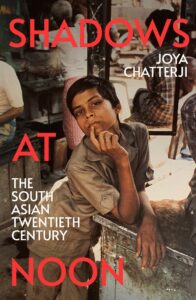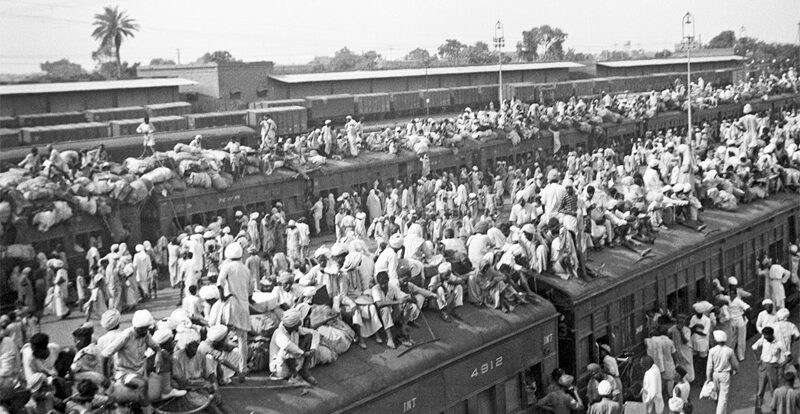I was seven years old during the 1971 war between India and Pakistan. My first political memory is of this short war, which lasted barely two weeks from 3 to 16 December. The blacked-out windows of our home in Delhi, the wailing air-raid sirens, the darkened tops of cars’ headlamps that made them look like Noddy-cars gazing coyly downwards—these are among my most vivid early recollections.
Article continues after advertisement
After lights-out, my nine-year-old brother Ini and I played Monopoly by torchlight under the bed. Delhi is not far from the border of West Pakistan: this fact of geography now entered my consciousness. Our English mother who had survived the Blitz was terrified that the city would be bombed. Over our early supper before lights-out, Ini and I discussed the ‘heroic’ deeds of India’s Indira Gandhi and the ‘evil’ Yahya Khan of Pakistan. Our khaansama (cook), Diwan Singh, a condescending Hindu Rajput with a hennaed handlebar mustache, convinced us that just as Muslims and Hindus were polar opposites, so Pakistan was the obverse of India. Yahya Khan, he told us, ate with his elbows instead of his hands. In Pakistan, according to Diwan Singh, the rain flowed heavenwards instead of falling to the ground. We fell for his fairytales, since our parents were too busy following the ‘real’ news to tell us what was happening. My father, a Bengali, as desperate to learn about rumored massacres in East Bengal and was glued to All India Radio. The name ‘Sheikh Mujibur Rahman’ came up again and again as my parents drank gin, soda and Angostura bitters in the dark.
Given that national identity was so fragile and contested before 1947, how did it become a matter so ‘natural’ after it?
Anti-Pakistani socialization, to which we were exposed—even as the children of left-leaning atheists—was intense. My father and his sister had sheltered Maoists on the run, having gone to school with Charu Mazumdar (one of the leaders of the Naxalite movement; Hill Cart Road, their family home, is a few miles from its epicenter in Naxalbari). Our father was also a character witness, at this time, for the left-wing Bombay journalist Arshad Faruqi, during his trial as a ‘Pakistani spy.’
Despite this, we fell for Diwan Singh’s stories. Post-colonial nationalist regimes on both sides of the border projected messages of difference and enmity so routinely that by 1970 even oddballs like us had come to identify either with India or Pakistan. It was not a smooth process, however. I have a memory of trying to stalk (with my feisty friend Emma) the Pakistani all-rounder Imran Khan, then on a visit to Delhi. How we adored him! By the 2000s, these notions had been naturalized to such an extent that the rare Indian citizen who supported the Bangladeshi cricket team was dismissed as an eccentric, while the many who admired Pakistan’s fast-bowlers did so in fear (if they were Muslims), because being branded ‘anti-national’ by this time was a very serious crime. Go straight to jail—ek dam (straight away). ‘Anti- nationals’ represented, it seems, a vital threat to the Indian state.
How did we become ‘Indians’, ‘Pakistanis’ and ‘Bangladeshis’ after the two divisions of the subcontinent? Given that national identity was so fragile and contested before 1947, how did it become a matter so ‘natural’ after it? Or did it? Did nation-making projects succeed?
Partition is often thought of as a physical process, a massive earthquake that sent different segments of the subcontinent hurtling apart in different directions. Because India and Pakistan (and later Bangladesh) evolved differently in certain important respects, and because the chatter about these differences has been so loud, the facts of their shared predicaments in the early years of nation-building have been all but drowned out. India and Pakistan evolved similar strategies in the face of comparable challenges, albeit on different scales. Common patterns were formed and persist across South Asia, partition notwithstanding. On both sides of the Radcliffe Line, nation-building shared similar premises. It tried, but failed, to produce ersatz citizenries. It is as well that we remember this.
__________________________________

Excerpted from Shadows at Noon: The South Asian Twentieth Century by Joya Chatterji. Copyright © 2024 by Joya Chatterji. Reprinted by permission of The Bodley Head, an imprint of Vintage, a division of Penguin Books UK.
